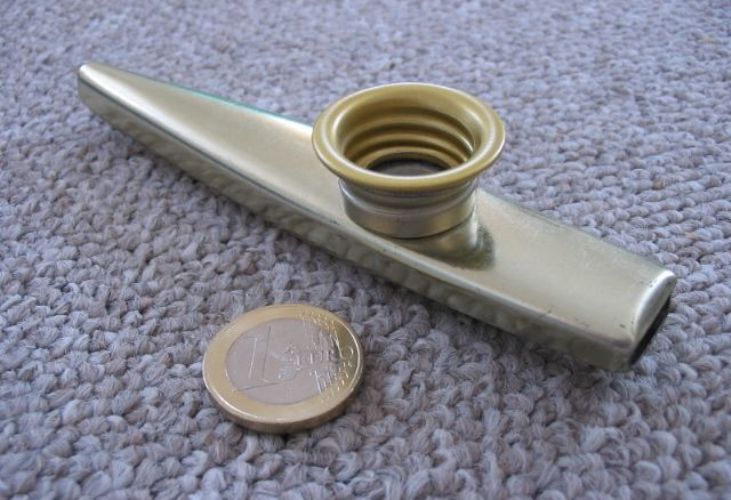
Hum in a Kazoo
Life Desk
Published:04 May 2021, 01:24 PM

Hum in a Kazoo
The kazoo is an American musical instrument that adds a “buzzing” timbral quality to a player's voice when the player vocalizes into it. It is a type of mirliton (which itself is a membranophone), one of a class of instruments which modifies its player's voice by way of a vibrating membrane of goldbeater's skin or material with similar characteristics. Similar hide-covered vibrating and voice-changing instruments have been used in Africa for hundreds of years, often for ceremonial purposes.
A kazoo player hums, rather than blows, into the bigger and flattened side of the instrument. The oscillating air pressure of the hum makes the kazoo's membrane vibrate. The resulting sound varies in pitch and loudness with the player's humming. Players can produce different sounds by singing specific syllables such as doo, too, who, rrrrr or brrr into the kazoo.
Some people refer to the kazoo's membrane as a reed, considering it performs the same action in the kazoo as it would a woodwind instrument, however reeds are made of cane (or a synthetic equivalent), while the membrane (most commonly made of waxy paper) is not.
It's popularly believed that Alabama Vest, an African-American in Macon, Georgia, was the one who invented the kazoo around 1840, although there is no documentation to support that claim. The story originated with the Kaminsky International Kazoo Quartet, a group of satirical kazoo players, which may cast doubt on the veracity of the story, as does the name “Alabama Vest” itself.
In 1879, Simon Seller received a patent for a “Toy Trumpet” that worked on the same principle as a kazoo: “By blowing through the tube A, and at the same time humming a sort of a head sound, a musical vibration is given to the paper covering c over the aperture b, and a sound produced pleasing to the ear.” Seller's “toy trumpet” was basically a hollow sheet-metal tube, with a rectangular aperture cut out along the length of the tube, with paper covering the aperture, and a funnel at the end, like the bell of a trumpet. The first documented appearance of a kazoo was that created by an American inventor, Warren Herbert Frost, who named his new musical instrument kazoo in his patent #270,543 issued on January 9, 1883. The patent states, “This instrument or toy, to which I propose to give the name 'kazoo' “...”Frost's kazoo did not have the streamlined, submarine shape of modern kazoos, but it was similar in that the aperture was circular and elevated above the length of the tube. The modern kazoo—also the first one made of metal—was patented by George D. Smith of Buffalo, New York, May 27, 1902.
In 1916, the Original American Kazoo Company in Eden, New York started manufacturing kazoos for the masses in a two-room shop and factory, utilizing a couple of dozen jack presses for cutting, bending and crimping metal sheets. These machines were used for many decades. By 1994, the company produced 1.5 million kazoos per year and was the only manufacturer of metal kazoos in North America. The factory, in nearly its original configuration, is now called The Kazoo Factory and Museum. It is still operating, and it is open to the public for tours. In 2010, The Kazoo Museum opened in Beaufort, South Carolina with exhibits on kazoo history.